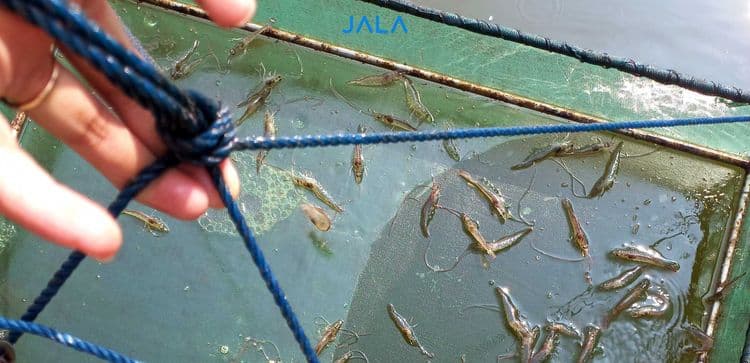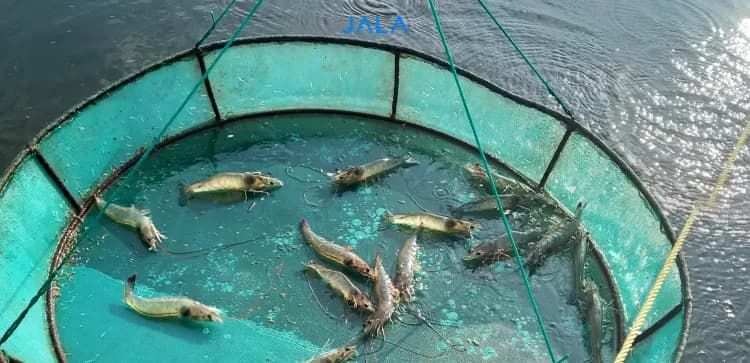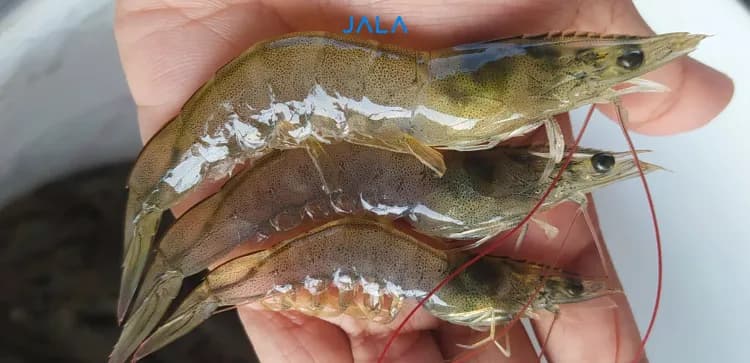
White Spot Disease is a highly dreaded disease among shrimp farmers, especially in intensive shrimp farm areas, such as the northern coast of Java, Indonesia. This disease is caused by the White Spot Syndrome Virus (WSSV), which comes from the Nimaviridae family and Whispovirus genus (Rukisah et al. 2019). WSSV is often found among vannamei and giant tiger shrimp farms, especially in farming conditions with fluctuating temperature and poor salinity (Lantu 2010).
White Spot Disease infects shrimps in the Post Larva (PL) 40g stage and results in 100% lethality 3-10 days after clinical symptoms (Rahma et al. 2014) The virus spreads rapidly both vertically (from shrimp to larva) and horizontally (via water, sediments, feed, and pests (Kono et al. 2004).
Shrimp infected with WSSV can be detected from loss of appetite, darkened body, white spots on its carapace, swimming in groups near the water surface, reduced activity, and disturbed intestinal microbiota (Yanti et al. 2017, Aulia et al. 2019). White spots first appear in the 5th and 6th cephalothorax segment from the abdomen which then spread to the shrimp's whole body (Kilawati dan Maimunah 2015).
Early detection of WSSV helps to prevent the spread and subsequently large scale farm loss. Identification can be done through morphological observation or molecular tests such as Polymerase Chain Reaction (PCR),to%20the%20offered%20template%20strand.) (Yanti et al. 2017).





